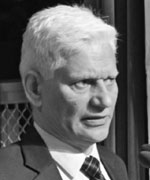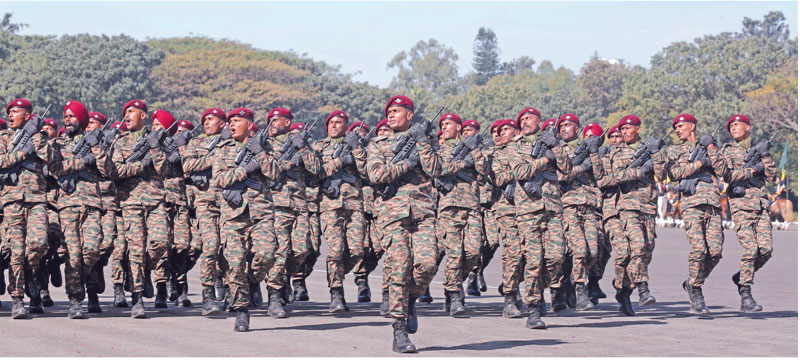Out of the Box
 Col Yogander Singh (retd)
Col Yogander Singh (retd)
For those who don’t remember, the armies of East India Company and its native protagonists had no retirement age. For evidence, read the famous biography of Subedar Sita Ram who served in the EIC army for nearly half a century (Sita Ram Pandey, [Ed. James Lunt], From Sepoy to Subedar: Being the Life and Adventures of Subedar Sita Ram, a Native Officer of the Bengal Army, Routledge & K. Paul, London, 1970). During his service period, Sita Ram, along with his unit was continuously traversing the length and breadth of the country, fighting in numerous battles.
Till the end of World War I, the sepoys, who mainly came from the farming communities, preferred to go back home after short stints. However, reducing sizes of farmlands and increasing life spans brought about a change, and especially after independence, soldiers preferred to stick on for longer period. Between 1947 and 2000, the terms of service of the troops underwent numerous changes, primarily driven by social factors and organisational requirements, with the only constant being slow increase in the age of retirement as improved diet and medicine improved fitness levels and prolonged average life spans. Starting with the Fifth Central Pay Commission (CPC), management of the military human resource (MHR) has drawn attention of many committees and experts at different times and their recommendations have a surprising degree of commonality, which are summarised as follows:
Fifth CPC: It suggested 25 per cent reservation in initial recruitment and setting up of a Joint Recruitment Board consisting of representatives of Central Police Organisations (CPOs) and armed forces headquarters so as to jointly select officers/ men who would render four to seven years’ service in the armed forces to be followed by lateral shift to CPOs and to ensure that proper quality of personnel suitable for both the military and CPOs were recruited.
Sixth CPC: It recommended that all recruitments to the posts of short service commissioned officers and personnel below officers’ ranks in the defence forces, CPOs and various defence civilian organisation should be made with the selected candidates serving initially in the defence forces for some period before being laterally shifted to CPOs and defence civilian organisations.
Seventh CPC: Besides endorsing the suggestions of the earlier CPCs, it also recommended that possibilities of lateral transfer within the army to the navy and the air force and to defence civilian entities under the ministry of defence be explored. It also recommended steps to be taken to fully utilise available 10 and 14.5 per cent quota available in Central Armed Police Forces (CAPFs) and Central Public Sector Units (CPSUs) and banks respectively for Group C.
Kargil Review Committee: The Kargil Review Committee recommended reducing the colour service to a period of seven to ten years, and thereafter, releasing these officers and men for service in the country’s para-military formations. ‘After an appropriate period of service here, older cadres might be further streamed into the regular police forces or absorbed in a National Service Corps as provided for under Article 51A(d) of the Constitution…’
Parliamentary Standing Committee of Defence: It is important to quote the Parliamentary Standing Committee of Defence (13th Lok Sabha) verbatim. ‘The steeply pyramidal rank structure for Officers, as well as PBOR and consequent career stagnation in the Armed Forces with limited opportunities for upward mobility have been repeatedly identified as a major disincentive, and one of the main sources of dissatisfaction amongst all ranks. It has also the main reason for the ageing profile of the Armed Forces. Yet, there was a perceptible lack of interest within the Government to meaningfully consider the issue of lateral induction of Armed Forces personnel at all levels into Para Military Forces/Central Police Organisation, as well as other departments of the Government and Public Sector, which provides the only lasting solution of both these problems.’ The Committee also noted with concern that the unilaterally dismissive attitudes of the department of personnel and training as well as the ministries of home affairs and finance to the proposals from the ministry of defence regarding structured lateral induction and strongly urged the government to convene an inter-ministerial committee to resolve the issue.
The committee went on to reiterate a radical solution to the twin problems of ageing and stagnation in the military. It ‘recommended that about half of the strength of the para-military forces/Central Police Organisation Officers/personnel and similarly a portion of police force in State(s) should consist of only ex-Army officers/personnel whose services could be utilised by the State(s) as and when required. It would be an avenue for both employment and continual national service for the Army personnel and also not require the Army to provide offices/JCOs/ORs to PMFs/CPOs.’

Redeployment Model
Since a broad consensus had emerged on the way forward for the management of military human resource (MHR), it is indeed surprising that the present government came up with a half-baked scheme called Agnipath, whereby it is basically exploiting widespread poverty and unemployment to fill in the military ranks with underpaid contractual workers.
It is not that viable solution was fraught, rather it is there in the recommendations of expert panels and can be implemented within the ambit of existing rules and procedures. The proposed MHR model envisages lateral transfer of certain number of soldiers to CAPFs under the ministry of home affairs (MHA) and defence civilian jobs under the MoD.
Some opponents of the lateral transfer from the army to CAPF argue that the ‘age profile of the CPOs will be hit adversely by this lateral shift.’ This is a patently false argument and was adequately answered by the Sixth CPC. ‘Presently the average age of recruitment in Defence Forces is 19
Subscribe To Force
Fuel Fearless Journalism with Your Yearly Subscription
SUBSCRIBE NOW
We don’t tell you how to do your job…
But we put the environment in which you do your job in perspective, so that when you step out you do so with the complete picture.








